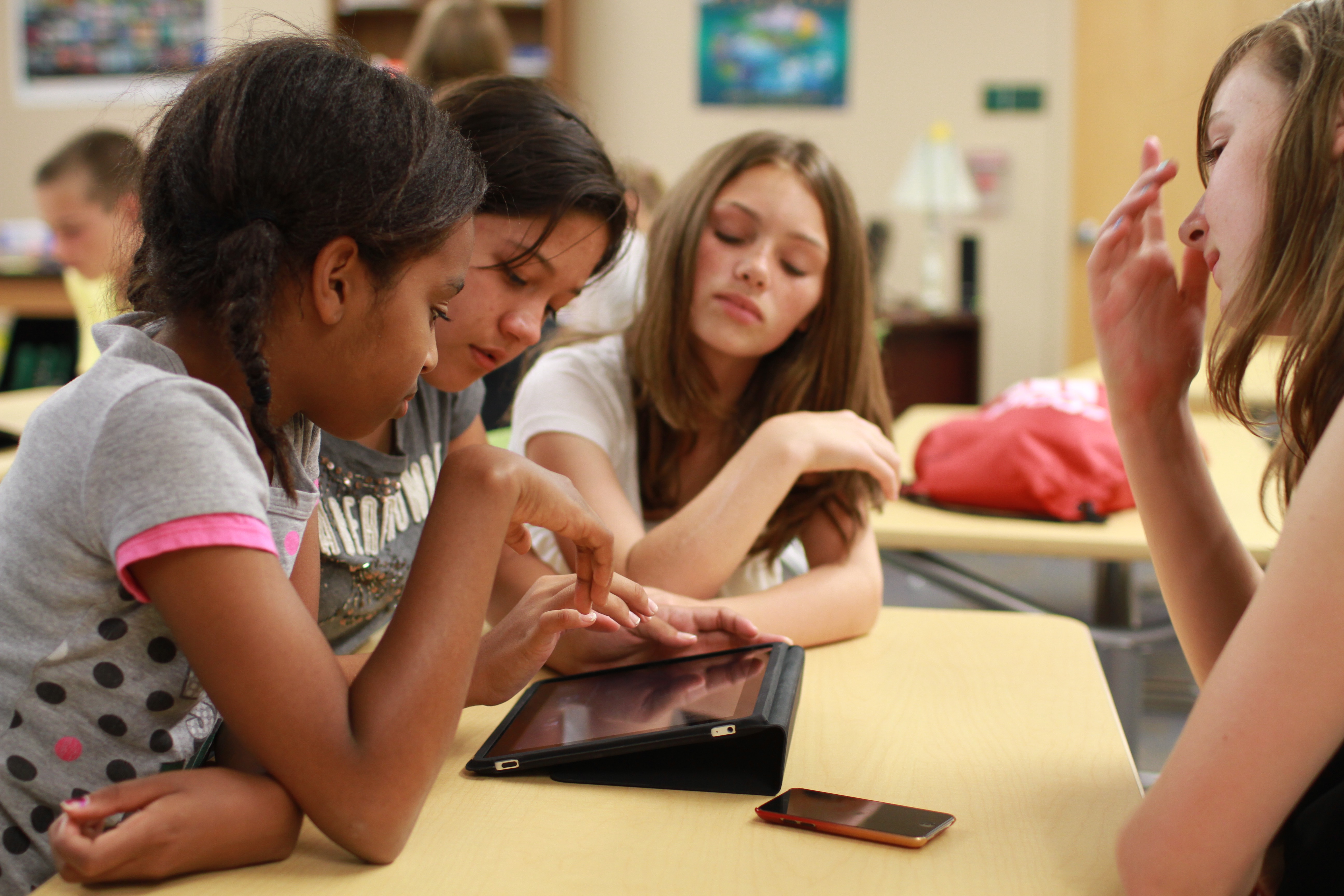Teaching Children Using Media

This post is part of the series on children and media. We are venturing from the home environment into school environment. Again, if you are interested in this topic, please come join us on Facebook, where I run a participatory research group in which we discuss all issues related to children and media
My kids are lucky. We lucked into a great free school in a rather posh neighbourhood. In addition to having a great approach to learning, the school also has an incredible PTA. The PTA is an organisation comprised of parents (mostly moms), whose job it is to raise money for “extras” for the kids in the school. The money is used to fix up the playground, take entire classes to swimming lessons, and also provide iPads for entire classes. There are trollies with 30 iPads on them in the school, and they are being rolled around to classes in accordance with a strict schedule, but all classes get them at least once a week. In addition to ICT (information, communication, & technology) classes, in which the children learn how to operate a touch screen and how to program, they also use the touch screens for searching for information about the topics they are covering in class, such as the lives of Romans or how caterpillars become butterflies.
This use of touch screens in class is one of the hallmarks of a “good school”. At least that’s what principles or the marketing branches of schools seem to think, as every school brochure I’ve seen talks about how technologically advanced the school is, as if being technologically advance is a guarantee of the school’s quality. Don’t get me wrong, tablets and mobile devices have great potential, but are they actually delivering? Is it worth switching schools for? As usual, I’m interested in the research. Is there evidence that using touch screens actually helps children learn things in the class?
What Did They Do?
I found a meta-analysis published last year by a few researchers based in Taiwan (it’s open access, so you can download it if you feel the urge). They did a good job of being very careful with the moderating variables (these are variables that affect the effect-size, so things that would impact the outcomes of the studies), and included age, software and hardware use, teaching methods, subject domains, and the setting the intervention was applied in. Interestingly, all the other reviews I found were qualitative reviews, without a single mention of control group. That is unfortunate. Especially in a learning setting, you have to have a control group because people learn just by being in class sometimes. Note that I said sometimes, I don’t advocate this as a learning method. Anyways. Here’s another interesting tidbit: not even 20% of the peer-reviewed published papers on the topic of teaching or learning using any kind of mobile device were empirical studies. That’s a lot of paper and ink without necessarily a lot of evidence behind it.
What Did They Find?
Mobile devices (the research looked into laptops and hand-held devices) had a medium effect on learning outcomes. According to the authors’ analysis, almost 70% of learners using a mobile device performed significantly better as compared with learners who didn’t use a mobile device. So, yes, using mobile devices is apparently good for learning. What’s much more interesting, as always, is the moderator analysis. The analysis shows that hand-held devices are more effective than lap-tops and that informal settings such as museums and outdoors are more effective than formal settings (i.e., classrooms). They also found that the teaching method mattered: an inquiry-oriented method or a mix of teaching methods were more effective than other methods, even game-based and cooperative learning methods. In other words, the best way in which children (and adults, it would seem) learn is when we hand them a device, ask them a question, and set them loose at the museum or the forest to find out the answer. Which I really wish our school would do, but I doubt it would.
What Does It Mean?
Mobile devices are cool. They are new and exciting. One effect that they have (and the authors mention this but also note there’s not enough research on the subject) is that mobile devices may encourage teachers to find innovative teaching methods. For example, they allow for inquiry-oriented learning in a much easier way than traditional classrooms, and we already know that inquiry-based learning is the best. But if we’re using computers as digital note-taking devices and the teaching method remains the same, kids are not necessarily going to learn better just by having a screen there. Which, if you’ve been following this series, shouldn’t surprise you. All the research we’ve talked about in the last six months concludes the same thing: it’s not the technology per se that makes a difference, it’s how we use it.
However, here’s the problem. Schools can’t take 900 kids (the size of an average city elementary school) and set them loose in the museum on a daily basis. These kinds of projects just don’t scale well, and the school has all kinds of annoying health and safety regulations to think about. But I think what we can really take away from this meta-analysis is that teachers matter, and if children are to learn, we need the teachers to care and to work hard to provide inquiry-based learning. Inquiry-based learning is a lot harder to do as a teacher than lectures and worksheets, especially with a standardised test looming. And technology can’t fix that. It can make it a little easier, it can motivate a bit more. It just can’t fix the classrooms or the school system. But that’s a whole other blog post.
